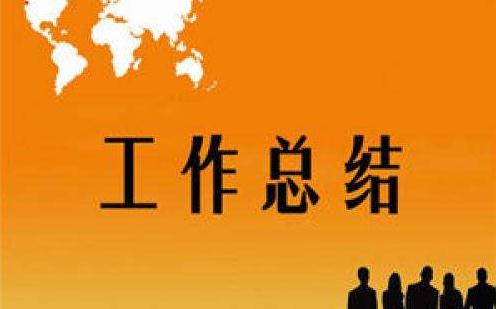金华古子城寻访记
时间:2020-04-03 05:14:34 来源:千叶帆 本文已影响人
沧桑变幻:历史上有名的古子城
古城金华拥有2200多年的建城史,若想在当下追寻其历史踪迹、城市记忆、民俗表达,非古子城莫属。古子城在金华这座城市的腹地,始建于唐昭宗天复三年(903)以前,距今已有1000多年历史,给我的印象是由陌生到熟悉的过程。
古子城有许多坊巷,最有名的酒坊巷是老居民区;八咏路上的古玩市场周末分外热闹;鼓楼里、熙春巷里的各色创意餐饮店是“吃货”们的首选,也是文青们拍照的圣地;东市街上的金华市博物馆是金华历史文化的展示窗口;飘萍路边的八咏公园和婺州公园,永远是“满园春色惹人醉”。

近日,笔者一行走访了古子城,那些外墙斑驳的市井街巷的建筑遗存并不缄默,屋里的人们打开话匣,就是一段家族兴衰荣辱的时代故事。祖辈口中不时念及的过往,代代传承,成为我们对一个家、一座城的认识,而最后指向的是对我们自身的认识。
走访从酒坊巷开始。这条巷的得名,因明代时巷内开设过酒坊而来。古典小说《金瓶梅》《红楼梦》中多次提及的金华府酒,就出自此巷。“文革”初期,酒坊巷曾改名为创新巷,不久又更名为健康巷,1980年才恢复酒坊巷名。这里曾经是繁华富庶之地,以前的住户非富即贵,而今破旧残败,面临拆迁。但是,在这条坊巷中,随便推开的一扇门里都深藏着一部丰富多彩的家族生命史,配合着波澜壮阔的历史变迁,让我们真切地感受着今昔沧桑变幻。
斗转星移:大城市中的老坊巷
酒坊巷N号,院门虚掩着,轻轻地推开,沉重的木门发出“吱嘎”声。院内两层三进的房屋构造,跟屋主方大伯和郑大妈表明来意、得到允许进到里屋。一栋老宅,两个天井,楼上楼下十二间门锁生锈的“公房”、两间“私房”,仅这些似乎就可以大致构想出这个家族的兴衰变迁轮廓。细聊后得知,方家祖籍在衢县大洲镇,方大伯的爷爷方正南是民国时期金衢地区有名的律师。此宅是清代官宦旧宅,民国时为方正南及其第三房姨太太住所,目前主要是方正南的两个孙子即方大伯和二哥及其家人居住。方正南娶有三房妻子,膝下有子24人,新中国初期,方家兴盛程度达到极致,现在方家族裔大都是大学生,分散在全国各地。据方大伯介绍,其父为三房所生,满腹诗书,颇有才华,身材魁梧,仪表堂堂,曾参加过抗美援朝,转业后担任金华苏孟小学的教师;其母曾是部队的宣传干事,不仅人长得很漂亮,尤其能歌善舞。他还告知我们,方家第三房育有五男二女,其父是老大;二叔毕业于郑州大学,后在郑州工作;三姑毕业于北京医科大学,后在北京工作;四叔和五叔在地质队工作,后两人均因公牺牲;六姑是东莞某医院的医生;小叔不详。
方正南在20世纪50年代过世了。方家一共14间房,仅分到两间私房,其余均没收成公房。“文革”过后,因不知如何申请公房转私房,方大伯一家三口至今仍住在130平方米左右的一间私房内。那些公房住户都在外面买了房子,不住在这里,闲置的房间也不再属于方家了。说到方家现今的状况,方大伯透露,兄弟姐妹四人,大哥在迪耳药业工作,二哥在某银行印刷部工作,三姐在金华一家运输公司做出纳,自己是老四,在尖峰水泥厂工作,现在四人均已退休。方大伯目前拿着2000多元的退休金,和郑大妈夫妻俩在屋旁开了个棋牌店,儿子在读初中,基本能够满足生活所需。
沧海一粟:大历史中的小家庭
笔者从这私房里看到的是繁华过后的落寞,轻叹一声,却也不得不迈开腿,向那斑驳的旧门外走去。
在酒坊巷M号,徐爷爷和赵奶奶老两口正精神地坐在门前读报。徐爷爷爱好书法,屋舍内挂满了字画,得知我们对此处的文化感兴趣、欲了解寻常人家的家族史,就招呼我們进屋,并向我们娓娓道来。

徐爷爷的父亲是民国教育部秘书长黄人望家的长工,20世纪50年代初期,徐家的成分被划为贫农。而赵奶奶是出身落魄官僚家庭,也是革命烈士的后代,她与徐爷爷的结合或许可以看作是政治婚姻。赵奶奶的大外公姚勇忱留学日本,后追随孙中山加入同盟会,1915年,被袁世凯秘密杀害,年35岁,墓在杭州辛亥革命烈士园内。赵奶奶的外公姚是忱曾担任金华县长。赵奶奶的父亲是国立英士大学工学院的教师,家里是做石灰生意,且品性善良,了解母亲家情况,对母亲家照顾有加,两家就订了这门亲事,婚后生了四个女儿,赵奶奶排行老三。她笑着说:“年轻的时候总是抱怨环境,终日愁眉不展,现在年纪大了,想开了,和老伴退休在家,日子过得很清闲。母亲今年90高龄,身体还很硬朗,姊妹家都富裕起来了,自己的一双儿女在金华工作,也都很有孝心,一有空就会来看望我们。”
方家和赵家的百年兴衰,可以说是中国近代史的缩影。通过追溯家族的历史记忆,饮水思源,让我们对今日的幸福生活倍感珍惜。
见微知著:小人物中的大情怀
酒坊巷84号,我国现存唯一见证两岸人民共同抗日的台湾义勇队纪念馆。管理员蒋阿姨详细、耐心地向我们解说了台湾义勇队在金华的光荣事迹,并讲述她自己的人生经历及对酒坊巷、对纪念馆的深厚情感。从她激情洋溢的言谈、抑扬顿挫的语调中,足以看出她对这份工作的一片热忱。
东市街50号,金华市剪纸博物馆。馆长詹东明先生是浙江省工艺美术大师,长发长须,很有艺术家气息。詹先生是金华本地人,这里的每一幢老屋、每一口水井、每一块石碑,都深深吸引着他将这些历史符号运用于剪纸艺术中。他告诉我们这座从义乌迁建的清代建筑是他申请认养的,他希冀自己能为展示、保护、传承、抢救和研究金华剪纸添砖加瓦。
蒋阿姨和詹馆长将自己全部的光和热投入到了工作中,与他们交谈时,深深地被其眼眸里的光芒所吸引。前者致力于弘扬和传播爱国主义教育精神,后者力求能够创新和发展民间剪纸文化,从这两个普通人身上,我们看到了心系社会的大情怀。
值得在古子城一游的,尚有酒坊巷128號的《浙江潮》旧址,123号的胡步蟾故居,103号的李友邦将军办公处,98号的真神堂旧址及旁边的酒泉井,80号的湘岩试馆;将军路81号的永康考寓;八咏路上的八咏楼以及东侧的蓉峰书院、休文井,192号的黄宾虹故居,188号的徐家故里,123号的状元坊;飘萍路489号的婺州公园及其东边的八咏公园,153号的保宁门,98号的满堂书苑;鼓楼里76号的将军楼,70号的太平天国侍王府;熙春巷58号和69号的古戏台;东市街上的拦路井,76号的福音医院,66号的何氏三杰陈列馆。
通过这次对古子城的寻访,我再一次感受到了“人文世界处处皆田野”,无论在乡野村落,还是在街巷里弄,追访普通人的家族生命史,将其置于广阔的历史脉络之中来审视,“个体”“家族”“社会”“时代”等因素无疑是紧密相连的,彼此镶嵌在社会结构之中,相辅相成。
(本文摄影:蒋惠婷)
A Stroll into the Ancient Inner City of Jinhua
By Jiang Huiting
With a history dating back at least 1,700 years, the ancient inner city serves as an ideal case study to look into the 2,200-year city history of Jinhua in Zhejiang Province. For a glimpse of the most authentic historic sediments of the ancient city, the alley labyrinth of the inner city together with its peripheral blocks is a must-see.
Located in the heart of downtown Jinhua, the ancient inner city was first built in the years of Emperor Zhaozong of the Tang Dynasty (618-907). Today, the well-conserved town area is a bustling lived-in place hosting an array of cultural spots including the Jinhua Museum located on Dongshi Street and a dazzling variety of restaurants in Xichun Alley. The weekend antique market on Bayong Street has always been a favorite rendezvous of the city’s old-timers flocking to browse through knick-knacks and engage in small talks.
Jiufang Alley, named after the wineries in the Ming Dynasty (1368-1644), is a good place to start the promenade in the ancient inner city. It is believed that the ‘Jinhua Wine’, mentioned repeatedly in published in the Qing Dynasty, was produced here. The alley was renamed twice during the country’s Cultural Revolution period, but regained its original name in 1980.
Surprising glimpses into the locals’ life are stumbled upon. One moment you are gazing into a busy café, and the next you are peering into someone’s dimly lit home. However, the houses are not just ghostly shells of the past, but are still inhabited today. Towards the outskirts of the old town, brown antique roof tiles contrast against imposing white apartment buildings, marking the end of the walled-in example of past living.
One of the houses in the ‘winery alley’ is a sprawling courtyard residence lived in by the third generation of Fang Zhengnan, a famous lawyer who had three wives and 24 children. The heyday of the extended family in the 1950s is told by the sheer size of the two-storey, lavish mansion that has a total of 14 rooms, one of which is inhabited by one of the grandsons of Fang Zhengnan.
The house a few meters away is the home of an old couple who also has a stormy life story to tell. The man’s father was a family laborer hired by Huang Renwang, Secretary-general of the Ministry of Education of the Republic of China. His wife is the granddaughter of Yao Yongchen, who was a follower of Dr. Sun Yat-sen and was killed by Yuan Shih-kai at the age of 35.
The small alley also hosts the Taiwan Volunteer Corps Memorial Museum, where a glorious chapter in China’s resistance war against Japanese aggression is commemorated. A Qing-style house relocated from Yiwu is the Jinhua Paper-cutting Museum, located at No. 50 on Dongshi Street and now hosted by Zhan Dongming, a local artist dedicated to the rescue and protection of the paper-cutting culture of Jinhua.
The vicissitudes of the old inner city is also witnessed by a cluster of historical attractions in the Jiufang Alley, such as the former residence of the editorial office of Zhejiang Tides, the former residence of famous educator and biologist Hu Buchan, and the former site of a Christian church called Zhen Shen Tang.
One can also take in the cultural glory of the city on Bayong Street, where the former residence of Huang Binhong, one of 20th-century China’s most famous literati painters, is located. One of the houses on Dongshi Street is the former site of a charity hospital that wrote a special ‘chapter of love’ in the history of Jinhua.
相关热词搜索:子城,寻访,金华,






